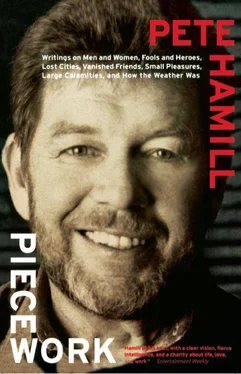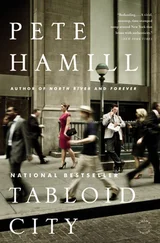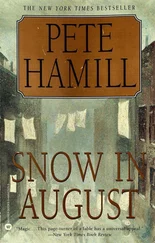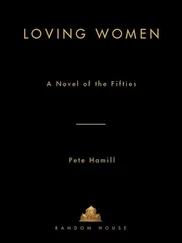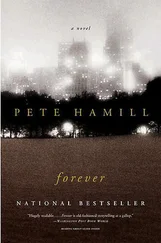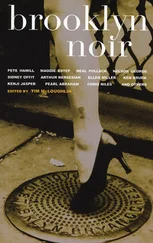Pete Hamill - Piecework
Здесь есть возможность читать онлайн «Pete Hamill - Piecework» весь текст электронной книги совершенно бесплатно (целиком полную версию без сокращений). В некоторых случаях можно слушать аудио, скачать через торрент в формате fb2 и присутствует краткое содержание. Год выпуска: 2009, ISBN: 2009, Издательство: Little, Brown and Company, Жанр: Современная проза, Публицистика, на английском языке. Описание произведения, (предисловие) а так же отзывы посетителей доступны на портале библиотеки ЛибКат.
- Название:Piecework
- Автор:
- Издательство:Little, Brown and Company
- Жанр:
- Год:2009
- ISBN:9780316082952
- Рейтинг книги:5 / 5. Голосов: 1
-
Избранное:Добавить в избранное
- Отзывы:
-
Ваша оценка:
- 100
- 1
- 2
- 3
- 4
- 5
Piecework: краткое содержание, описание и аннотация
Предлагаем к чтению аннотацию, описание, краткое содержание или предисловие (зависит от того, что написал сам автор книги «Piecework»). Если вы не нашли необходимую информацию о книге — напишите в комментариях, мы постараемся отыскать её.
offers sharp commentary on diverse subjects, such as American immigration policy toward Mexico, Mike Tyson, television, crack, Northern Ireland and Octavio Paz.
Piecework — читать онлайн бесплатно полную книгу (весь текст) целиком
Ниже представлен текст книги, разбитый по страницам. Система сохранения места последней прочитанной страницы, позволяет с удобством читать онлайн бесплатно книгу «Piecework», без необходимости каждый раз заново искать на чём Вы остановились. Поставьте закладку, и сможете в любой момент перейти на страницу, на которой закончили чтение.
Интервал:
Закладка:
Ye Loyalists of Ireland
Come, Rally round the Throne!
Thro’ weal or woe prepare to go,
Make England’s Cause your own;
Remember your allegiance,
Be this your Battle Cry,
“For Protestant Ascendancy
In Church and State we’ll Die!”
It’s a measure of how removed some sections of this city are from the rest of the world that grown men can still sing that song and mean it, in the last third of the 20th century. They can still march in the great Protestant parades on the 12th of July, festooned with orange sashes, crowned with bowler hats, in some pathetic imitation of their old rulers, talking as if the Battle of Boyne, when the Protestants smashed the Catholics, had taken place the week before and not in 1690.
“Rem. 1690,” of all things, is still scrawled on the crumbling walls of the Protestant ghettos, and wonderfully decorative paintings of William of Orange appear everywhere.
The terrible thing, of course, is that when all the festive marching has finished, and the dread invasion of the Papists has been repulsed, and all the defiant songs have been sung, the men of the Orange Order retreat back to Sandy Row and the streets off the Shankill Road, and they are poor again and wondering whether their sons will have to quit school and go to work, and whether their daughters will go off to England, and whether this week they might actually have a piece of steak.
There is much talk now in the North about the possibility of a violent Protestant backlash. In effect, there has been no fighting here between Protestants and Catholics since 1969; the fighting has really been between the IRA and the British Army. All arms searches have been in Catholic areas; no members of the Protestant militant groups — the Ulster Volunteer Force, the Tartans and others — were interned last Aug. 9th.
One reason for the ferocity of the Catholic and Republican resistance here is that the British Army’s task appears to be to disarm the Catholics, thereby leaving them at the mercy of a heavily armed Protestant majority. There are 100,000 licensed guns in the hands of Protestants, and one Belfast reporter told me that the number of unlicensed ones might be double that.
“This is what the backlash is supposed to be about,” the reporter told me. “It won’t actually happen, of course. You won’t get 100,000 Protestants fighting the Catholics any more than you ever see 50,000,000 Arabs assembling to fight Israel. But it serves the political ends of the people in power to keep talking about a backlash. They might, though I doubt it, actually talk it into happening.”
IV.
BELFAST
On the last day, the Saracens still moved through the city with their guns bristling and the eyes of the soldiers alert for sudden movement, while people stood on the streets in sullen hostility. The prisoners were still behind the wire at Long Kesh and Magilligan; there were still Irishmen stuffed in the hold of the prison ship Maidstone, standing in the Belfast harbor, within sight of the country they loved so much they were willing to die or be jailed for it.
A department store had been blown up, a bank raided, soldiers fired on in some country town.” Once again, it became devastatingly clear that reporters are essentially tourists at other people’s tragedies.
And yet when you prepare to leave this tragic country, there is always a sense that the story has not been fully told, that there is neither language nor sufficient compassion to properly spin the tale. The country hurt Yeats into poetry. It has not changed. Not in 50 years. Not in 300.
I wish I had been able to tell it all better, to explain that what is happening in the northeast corner of this island off the shores of Western Europe has something important to say to those of us who live in America. All the big abstractions are in it: the need for justice, the oppression that can lead men to violence, the destruction that always follows when decency and human goodness are set aside with contempt and bitterness.
But this is also about men who cannot feed their children and have seen them go off to Australia and America and Liverpool for five generations, and have decided at last that no more children will have to abandon the country in which they are born.
If that takes the Thompson gun, if it takes gelignite in the night, if it takes membership in the IRA, no matter; in Andersonstown, the Belfast stronghold of the Provisional IRA, there is 41 per cent unemployment among heads of families; but they are not leaving. They are prepared to die on their feet in their own land.
The story is also about women: easily the most extraordinary group of women I’ve ever met. Their men are in the concentration camps, or on the run. But go down into the Bogside in Derry, move through Ballymurphy and Andersonstown and Ballymacarat in Belfast, and you will see women holding it together; they paint the walls white in the afternoons to make the British soldiers better targets at night; they bang the garbage can lids when the soldiers approach, to warn the IRA men that the soldiers are coming and the arms must be stashed or used. They manage families, and have time for tea and gossip; but they are the iron of the Irish rebellion. In Edward R. Murrow’s phrase (used about the British in 1940), they are people who have decided to live a life, and not an apology.
Northern Ireland means something to Americans because much of what is happening here is happening in other forms in the United States. “We’re the blacks of Northern Ireland,” one young Irishman said to me. And there are of course parallels to the black experience in America. In Northern Ireland, Catholics are the last to be hired and the first to be fired. The artificial barrier of religion is used in the same way that the artificial matter of skin color is used in the United States, to separate working men from each other, to the advantage of a few.
In fact, since 1969 there have been no direct clashes between Catholics and Protestants in Belfast. There has been an urban guerrilla war between the IRA and the British Army; there has been much destruction of property. But there have been no true religious riots, no more than there were actual race riots in America during the late 1960s.
A number of blacks employed violence against property and against authority, an authority they believed was corrupt and oppressive; but there were never any large confrontations between blacks and whites. The IRA men are now essentially doing the same thing, with the large differences being that they are fighting in a much smaller country and they are a much larger minority in Northern Ireland than the blacks are in the United States. But their basic motivations, like those of the blacks, are economic. They are poor; they are the men of no property, and they want to live decent lives.
At present, the IRA are winning their guerrilla war. Even with internment, even with the presence of 15,000 British troops, the men and women of the Provisional wing of the IRA are continuing to fight. It is not just the killing of British soldiers by which you measure their effectiveness; they are also destroying the economy of the country.
They are winning because they are not losing. When a band of urban guerrillas can hold off the British Army and provide protection for their own people while causing extensive damage to the opposition, they are winning.
When I first went to Northern Ireland in 1963, the IRA were considered a tiny band of dreamy fanatics. That is no longer the case.
The two most recent events that insured their continued existence were the start of internment on Aug. 9 last year, and the killing of 13 civilians in Derry on Bloody Sunday. Those killings ended any possibility that the general Catholic population could ever accept the authority of the Northern Ireland government at Stormont, and destroyed any vestigial belief that the British Army was there in a spirit of fair-minded good will.
Читать дальшеИнтервал:
Закладка:
Похожие книги на «Piecework»
Представляем Вашему вниманию похожие книги на «Piecework» списком для выбора. Мы отобрали схожую по названию и смыслу литературу в надежде предоставить читателям больше вариантов отыскать новые, интересные, ещё непрочитанные произведения.
Обсуждение, отзывы о книге «Piecework» и просто собственные мнения читателей. Оставьте ваши комментарии, напишите, что Вы думаете о произведении, его смысле или главных героях. Укажите что конкретно понравилось, а что нет, и почему Вы так считаете.
